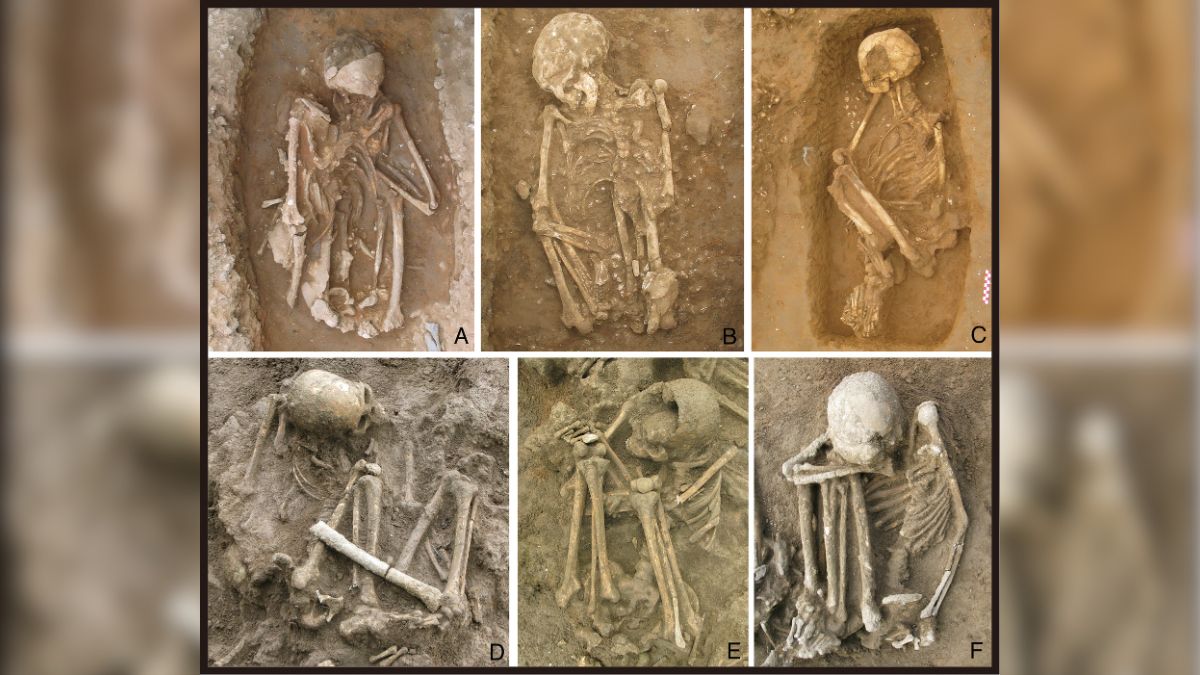Archaeologists have uncovered a discovery that could fundamentally reshape our understanding of human history and cultural practices surrounding death.
New research suggests that the oldest mummified human remains ever found may not come from ancient Egypt or South America, as long believed, but rather from Southeast Asia.
These remains, some dating back between 12,000 and 14,000 years, were preserved through a smoke-drying process carried out by hunter-gatherer communities thousands of years before the rise of complex civilisations.
The findings, recently published in the journal Proceedings of the National Academy of Sciences, indicate that deliberate mummification practices were taking place in Asia long before the Chinchorro culture in South America or the pharaohs of Egypt began preserving their dead.
The study represents the earliest known evidence of intentional body preservation in the world, pushing back the timeline for this practice by several millennia.
Ancient remains across Southeast Asia
The team of researchers examined 54 human burials collected from 11 archaeological sites spread across Southeast Asia.
The majority of the discoveries were made in northern Vietnam and southern China, with additional sites identified in Indonesia, the Philippines, Laos, Thailand, and Malaysia.
The remains were often interred in tightly bound, crouched, or squatting positions, with the bodies carefully arranged within the graves.
This unusual positioning caught the attention of scientists because it did not align with typical anatomical arrangements expected from natural burials.
Some skeletons also displayed burn marks, cuts, and other alterations. These signs were concentrated in parts of the body with less muscle mass, such as the hands and feet, suggesting deliberate exposure to heat rather than accidental burning or cremation.
This pattern hinted at a complex process rather than straightforward burial.
Initial interpretations by archaeologists classified these burials as “primary burials,” meaning the individuals had been buried intact in a single ceremony.
However, as more evidence emerged, researchers began to reconsider this assumption. They suspected that these remains had been treated with a form of preservation before burial.
Breakthrough moment in Vietnam
A pivotal moment occurred in September 2017 during an excavation at the Bau Du site in central Vietnam. During a discussion, late Vietnamese archaeologist Kim Dung Nguyen raised concerns about the puzzling arrangements of certain skeletons.
Some appeared to have been deliberately positioned against large stones, and their bone placements did not make anatomical sense.
Recalling this moment, lead researcher Hirofumi Matsumura of Sapporo Medical University in Japan said he initially voiced an idea in a half-joking manner but with genuine curiosity, “Could these burials be similar to the smoked mummies of Papua New Guinea?”
This suggestion sparked a new line of investigation. The team began researching traditional smoke-drying techniques still practiced in some modern-day communities, particularly in the New Guinea Highlands.
They compared photographs and descriptions of these contemporary practices to their archaeological findings and were struck by the similarities.
By January 2019, Matsumura and his colleagues travelled to Wamena in Papua, Indonesia, to directly observe smoked mummies preserved within local households.
These modern mummies bore a remarkable resemblance to the ancient remains they had excavated, reinforcing the possibility that a similar method was used thousands of years earlier.
Scientific testing confirms smoke-drying
While visual comparisons were compelling, the researchers needed concrete scientific evidence to confirm their theory.
They hypothesised that if ancient bodies were slowly smoked over low fires, the bones would not be visibly charred but would retain microscopic traces of heat exposure.
To test this, the team employed two advanced laboratory techniques: X-ray diffraction and Fourier-transform infrared spectroscopy (FTIR). These methods can detect subtle structural changes in bone caused by heat.
The analysis covered 69 skeletal samples, representing 54 individuals, from the 11 sites across Southeast Asia.
Over 90 per cent of the samples revealed clear evidence of having been exposed to low heat, confirming that they had been deliberately smoked rather than accidentally burned.
The process was consistent with a careful, controlled method designed to dry and preserve the body over an extended period, possibly weeks or even months.
Researchers concluded that these ancient hunter-gatherer communities were intentionally mummifying their dead through smoking thousands of years before other well-documented cultures developed their own preservation techniques.
The oldest tested mummy, discovered at the Hang Cho site in Vietnam, was determined to be over 11,000 years old. However, at another nearby site, Hang Muoi, archaeologists identified remains that were at least 14,000 years old.
Although these particular remains were not tested with the same laboratory techniques, they showed visible signs of partial burning observable to the naked eye.
These dates place the Southeast Asian mummies far earlier than the Chinchorro mummies of northern Chile and southern Peru, which date back around 7,000 years, and well before ancient Egypt’s Old Kingdom, where the earliest mummies are about 4,500 years old.
Significance of the discovery
The implications of this discovery are profound. Until now, scholars believed that mummification originated with either the Chinchorro culture or the early Egyptians.
The new findings suggest that the practice may have much deeper and broader roots, beginning among small, mobile groups of hunter-gatherers in Asia.
According to Matsumura, this method of preservation was not simply a practical response to environmental conditions but held deep cultural and spiritual significance.
“The practice allowed people to sustain physical and spiritual connections with their ancestors, bridging time and memory,” he said.
This spiritual component is supported by ethnographic studies of similar traditions in more recent times. In parts of West Papua, the Dani people continue to mummify their deceased relatives by smoke-drying them.
These preserved bodies are often kept within the household and revered for generations, serving as tangible links to the past.
Historical records indicate that smoke-drying and mummification also persisted in southern Australia into the late 19th and early 20th centuries.
These practices show remarkable continuity with the ancient methods discovered at the archaeological sites, suggesting a shared heritage or cultural transmission over thousands of years.
Practical and symbolic aspects
The researchers believe that the tightly bound, hyper-flexed positions of the ancient mummies may have served practical purposes.
Binding the bodies could have made them easier to move and transport across distances, especially for nomadic hunter-gatherer groups. This would have allowed families to carry their loved ones with them rather than leaving them behind.
Ethnographic data from New Guinea Highlands communities indicate that preparing a single smoked mummy can take up to three months of continuous care.
This labour-intensive process requires extraordinary devotion, underscoring the emotional and symbolic importance of the practice.
Geographic and cultural connections
The findings also reveal fascinating connections between ancient Asian populations and Indigenous groups in places like New Guinea and Australia.
Genetic and physical similarities suggest that these populations were part of a broad network of related communities spread across the region.
This shared ancestry may help explain why similar mummification practices appeared across such a wide area, from southern China and Southeast Asia to the Pacific islands and Australia.
Hyper-flexed burial positions resembling those found in Vietnam and China have also been discovered in South Korea and Japan, indicating that the tradition may have extended even further north and east than initially thought.
Research challenges and the impact of Covid-19
The study faced significant obstacles along the way. After the initial hypothesis emerged in 2017 and field observations were made in 2019, the onset of the Covid-19 pandemic disrupted travel and fieldwork.
Researchers, spread across multiple countries, had to find alternative ways to continue their investigations despite the restrictions.
Despite these challenges, the team successfully gathered and analysed samples once travel resumed, ultimately producing a dataset strong enough to support their conclusions.
Caution and ongoing debate
While the evidence is compelling, some experts urge caution. Rita Peyroteo Stjerna, a human evolution researcher at Uppsala University in Sweden, praised the study as “an important contribution to the study of prehistoric funerary practices.”
However, she noted that the dating methods could have been more rigorous and emphasized that additional research is needed to confirm whether smoke-drying was consistently practiced across all locations.
With inputs from agencies


)

)
)
)
)
)
)
)
)



